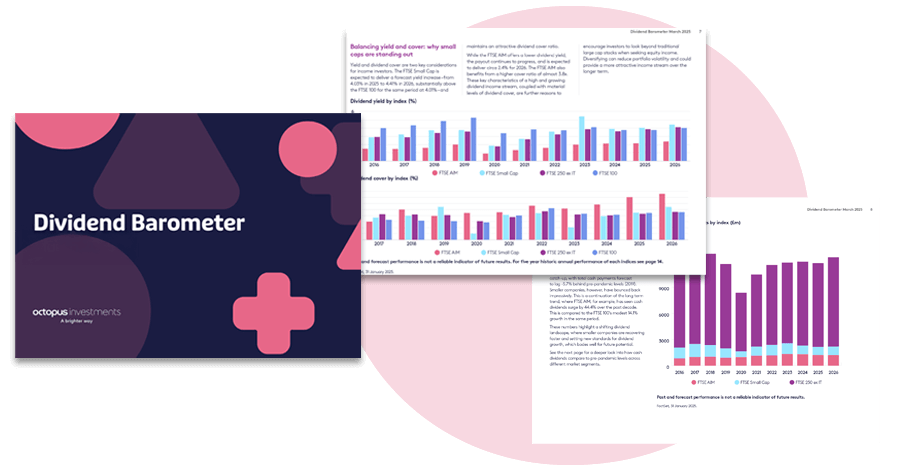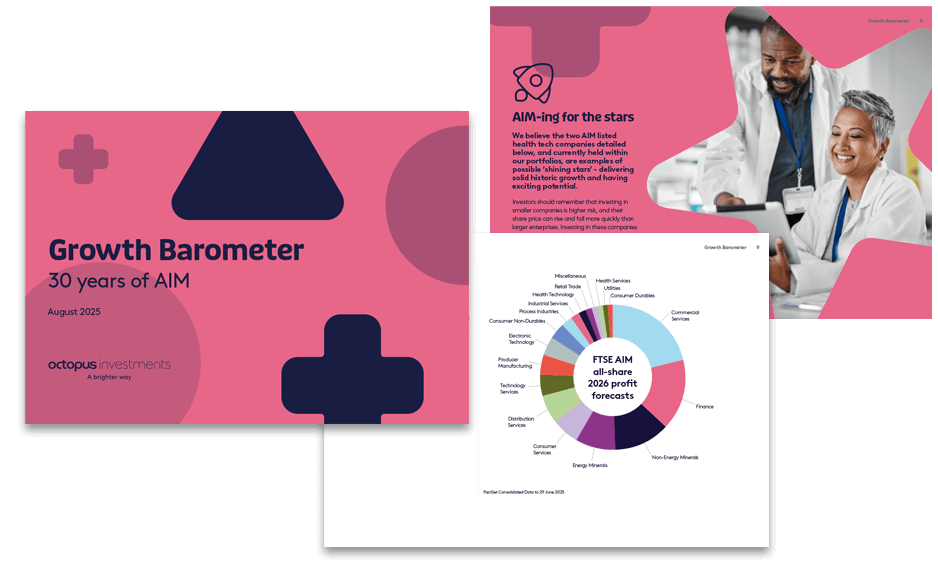WhitepaperInheritance tax
Explaining the residence nil-rate band
Exploring some of the implications of the residence nil-rate band
Last updated: 13 June 2025
The residence nil-rate brand is intended to eliminate or reduce the inheritance tax liabilities on the estates of thousands of homeowners. Bus as Toyin Oyeneyin explains, the complexity of the legislation could present challenges for advisers, clients and their families
Explaining the residence nil-rate band
The introduction of the residence nil-rate band (RNRB) was the biggest reform to inheritance tax legislation in almost a decade. For deaths that occur after 6 April 2017, the RNRB can be claimed on top of the existing £325,000 nil-rate band. It started at £100,000 per person and increased annually by £25,000 every April until 2020, when it reached £175,000. The RNRB will now remain at £175,000 until April 2030. Understanding whether your client’s estate should benefit from this allowance is not as simple as it sounds, as we explain in the next section.
Definitions
First and foremost, the RNRB will only be available to individuals or couples who have a ‘Qualifying Residential Interest’ (QRI). This means ownership of a residential property that has been the deceased’s home at some point. The property does not have to have been their main residence at the time they pass away. So, while a buy-to-let property owned by the deceased would not qualify as a QRI, a property that was once the deceased’s home, but was later let to tenants, would qualify. Where the deceased owns more than one qualifying property, their executors must elect the property they wish to be treated as the QRI.
Second, to claim the RNRB, the residence must be ‘closely inherited’. This means it must be left either by will, intestacy or survivorship, to a ‘direct descendant’.
In other words:
• The deceased’s children (the definition could include adopted, fostered or stepchildren) or grandchildren.
• The spouses of those children or grandchildren.
• The widows, widowers or surviving civil partners of those children or grandchildren if not remarried at the date of the death of the property owner.
Third, because the allowance was intended to help ‘middle England’ and those who aren’t especially wealthy, the RNRB comes with a ‘tapering restriction’. The available RNRB is reduced by £1 for every £2 by which the deceased’s net estate exceeds the ‘taper threshold’ of £2 million. This means that the maximum value of an estate that can benefit to any degree from the RNRB is currently £2.35 million (£2.7 million for a surviving spouse, for which see below).
Spousal transfers
1. Spousal transfers
The £325,000 nil-rate band works so that if the first spouse or civil partner to pass away leaves their entire taxable estate to their surviving partner, the estate of the second spouse can usually claim a nil-rate band double the amount applicable at the time. So the estate of the second spouse can benefit from a maximum combined nil-rate band of £650,000.
In a similar vein, the estate of the second spouse or civil partner to pass away will be entitled to claim double the RNRB applicable at the time of the second death where their partner’s estate did not make such a claim. The maximum amount of the claim will still be limited to the value of the home owned by the second partner to die.
1.1 What if the first spouse to die passed away before the RNRB came in?
Where the first spouse to die passed away before 6 April 2017, they will be deemed to have not used any of their RNRB, regardless of how long ago that first death occurred, to whom the estate was left at the time, or whether they owned a property.
In such cases the maximum RNRB available to be claimed by the estate of the second spouse will always be doubled. The exception to this is where the estate of the first to die exceeded the £2 million taper threshold (see below).
1.2 What happens if the first spouse had an estate valued at more than £2 million?
The £2 million taper restriction applies when calculating how much RNRB the first estate would have been entitled to claim, and therefore how much can be transferred to their surviving spouse.
If the estate of the first spouse was valued at more than £2 million, the percentage of transferrable RNRB available to carry forward would be reduced accordingly.
If the first spouse passes away after 6 April 2017, the taper restriction is applied to the RNRB allowance available in the year of the first death. However, if they passed away before 6 April 2017, the RNRB for this purpose is treated as being £100,000.
1.3 What happens to a surviving spouse who lives in a house subject to an IPDI trust?
If the first spouse to die gives the surviving spouse a life interest in their home, an immediate post-death interest (IPDI) trust is created. For inheritance tax purposes, the assets are treated as having been left to the surviving spouse absolutely. No inheritance tax should be payable at that time. The home will be treated as forming part of the surviving spouse’s estate, and if the trust provides for the home to be closely inherited on the surviving spouse’s death, both spouses’ RNRBs may be available (depending on the value of the estate).
This could potentially enable an entire estate to be left to a spouse for the remainder of their lifetime, and then subsequently to children from a former marriage, while still being able to claim the RNRB in full.
Ask Octopus
Do you have a question about inheritance tax and estate planning?
Use our free helpdesk to Ask Octopus

RNRB “bear traps” to watch out for
2. RNRB ‘bear traps’ to watch out for
2.1 Making gifts during the homeowner’s lifetime
The RNRB is an additional allowance that applies on the death of a homeowner. Unlike the £325,000 nil-rate band, if a lifetime gift of the home is made to children, rather than it being left to them on death, the RNRB will not be available to offset against that transfer.
2.2 Leaving a home to a discretionary trust
Whether the RNRB will be available if someone settles their home into trust by will when they die depends on the type of trust. If it is a discretionary trust, the RNRB will not be available, even if the potential beneficiaries are children or grandchildren. The RNRB will not apply to any transfers of property into trust made during someone’s lifetime.
2.3 The size of the second spouse’s estate.
On first glance, £2 million may sound like a generous point for the taper threshold to start. And, upon the death of the first spouse, it may be adequate to entitle their estate to the RNRB in full. However, in a typical married couple scenario, where most assets are owned jointly, the first spouse’s estate may not breach the £2 million threshold, but on receipt of their assets, the second spouse may well need to undertake some planning if their estate is to benefit from the RNRB in full.
If the estate on the second death is large enough, both the RNRB of the surviving spouse plus any brought forward transferrable RNRB could be lost altogether. This could even be the case if the estate on the first death was below the £2 million taper threshold and the RNRB went unused.
Planning opportunities
3. Planning opportunities
3.1 Downsizing the main residence and the ‘lost RNRB’
After the RNRB was first announced in July 2023, it initially raised concerns around the implications for someone who has to sell their home, for example to fund long-term care. Additional provisions were subsequently brought in to provide a similar level of relief where someone sells their home or downsizes before their death.
As a result, if someone sells their home and buys a lower value property, or never owns another property, a separate calculation will need to be performed to work out the amount of ‘lost RNRB’ their estate should be able to claim. This calculation compares the percentage of the maximum RNRB that would have been available to be claimed at the time the home is sold (including any transferred RNRB, with the maximum value for this based on the RNRB at the time of the second death), with the maximum RNRB in the year of death.
The available RNRB will be the lower of the amount resulting from this calculation and the value of the lower value home (where relevant) and other assets that are left to direct descendants. Unfortunately, there is no similar relief afforded to anyone who sold their only QRI before 8 July 2015 and does not acquire another one before they die.
3.2 The £2 million estate, making gifts and the ‘seven year rule’
The taper threshold becomes relevant where an estate is worth more than £2 million. It’s well understood that making gifts or settling discretionary trusts during a lifetime requires more than seven years to pass for the gifted assets to become free from inheritance tax. But the same seven year requirement is not relevant when considering whether an asset that has been given away should count towards this £2 million estate threshold.
Therefore, for clients with an estate in excess of £2 million, it might be worth considering whether they would be happy to give up access and control over enough of their wealth to make lifetime gifts that reduce their estate below £2 million. Clearly for those with a very large estate, the prospect of saving a maximum of £140,000 of inheritance tax per married couple may not be sufficiently attractive to make up for the inconvenience of giving away significant wealth during their lifetime.
Also, the usual seven year rule will apply for inheritance tax in general, so the usual trade-off will exist between someone being deprived of their assets for at least seven years and saving inheritance tax, over and above the absolute RNRB saving.
3.3 Business Relief and RNRB planning
Individuals with an inheritance tax liability can invest their money in companies that qualify for a government incentive called Business Relief (BR). Shares in companies that qualify for BR attracts relief from inheritance tax. One of the advantages of a BR-qualifying investment is that the holder retains access to their wealth, with the investment being able to be sold down during their lifetime if needed, for example to pay for care home fees. Another benefit is that unlike making gifts or settling trusts, inheritance tax relief is achieved after just two years, rather than seven.
As shares that qualify for BR are simply an investment, they remain in the investor’s estate but attract inheritance tax relief in respect of their value when they are left to beneficiaries on death. This means that such an investment will count towards the £2 million taper relief threshold if held at the time the investor dies.
One option for investors with particularly large estates to consider once their investment has been held for at least two years, would be to either make a lifetime gift of the BR-qualifying shares, or settle them into trust. This could be considered many years after initial investment, once access to wealth is no longer important, for example because remaining lifetime costs are more certain.
Assets that have been gifted away or settled into a trust (from which the settlor cannot benefit) at any time before the client’s death, will not be included as part of the RNRB assessment for taper purposes. If this reduces the estate’s value to below the £2 million threshold, it should be possible for the estate to claim the RNRB – leading to a potential inheritance tax saving of up to £140,000 per couple.
Very importantly, the investor needs to remember that to benefit from BR, the recipient needs to keep holding the BR-qualifying investment for seven years or until their death, whichever is sooner. If not, BR will be lost and inheritance tax will be payable in respect of the gift or settlement. Simply making a lifetime gift of cash or other non-qualifying assets would result in the same benefit for the purposes of the RNRB taper relief assessment, although doing so in the seven years prior to death will not result in any further saving of inheritance tax. And making a lifetime settlement of non BR-qualifying assets into trust would in addition result in a 20% Chargeable Lifetime Transfer needing to be paid. Investors thinking of undertaking such lifetime planning should consider the impact of lifetime taxes such as capital gains tax and income tax.
BR risks to consider
BR risks to consider
BR is an incentive to invest in smaller and unquoted companies. This means there are specific risks to consider. The value of a BR-qualifying investment, and any income from it, can fall as well as rise. Investors may not get back the full amount they invest.
Investments in Alternative Investment Market (AIM)- listed and unquoted companies are likely to have higher volatility and liquidity risk than shares quoted on the main market of the London Stock Exchange. Tax treatment depends on individual circumstances and could change in the future.
Conclusion
Conclusion
The RNRB is complicated and not very well understood. Now could be a good time to sit down with clients and review their existing estate planning arrangements (if any) to ensure that they are making the most of the new allowance. For example, clients might benefit from advice in relation to their will, to make sure that the provisions relating to their home do not prevent the RNRB from being claimed. And if they have a very large estate that includes a BR-qualifying investment, they might want to consider whether making a lifetime gift or settling it into trust could be beneficial.
As we have tried to highlight, there are some potential pitfalls to be wary of, but the new rules also present an opportunity for financial advisers to add value by understanding the complexities of estate planning and by offering effective solutions to meet different client challenges.
Tax legislation, rates and allowances are correct at time of publishing for the tax year 6 April 2024 – 5 April 2025.
From 6 April 2026, a 100% IHT relief will continue for the first £1 million of combined agricultural and unquoted Business Relief qualifying property (e.g. sole traders, partnerships, unquoted companies). Amounts over the £1 million will attract 50% IHT relief. Business Relief qualifying companies listed on the Alternative Investment Market (AIM), will attract 50% IHT relief irrespective of the investment amount.

Toyin Oyeneyin
Tax Product Specialist, Octopus Investments
Inheritance tax (IHT) calculator
Related resources
Related resources
IHT Toolkit
You can educate and nurture clients with these resources when having conversations about estate planning using this handy Toolkit.
Intergenerational planning guide
Who will advise your clients beneficiaries? Read our top tips for retaining assets under advice in the great wealth transfer.
Autumn Budget Hub
Everything advisers need to translate Budget changes into meaningful conversations and smarter client outcomes.






